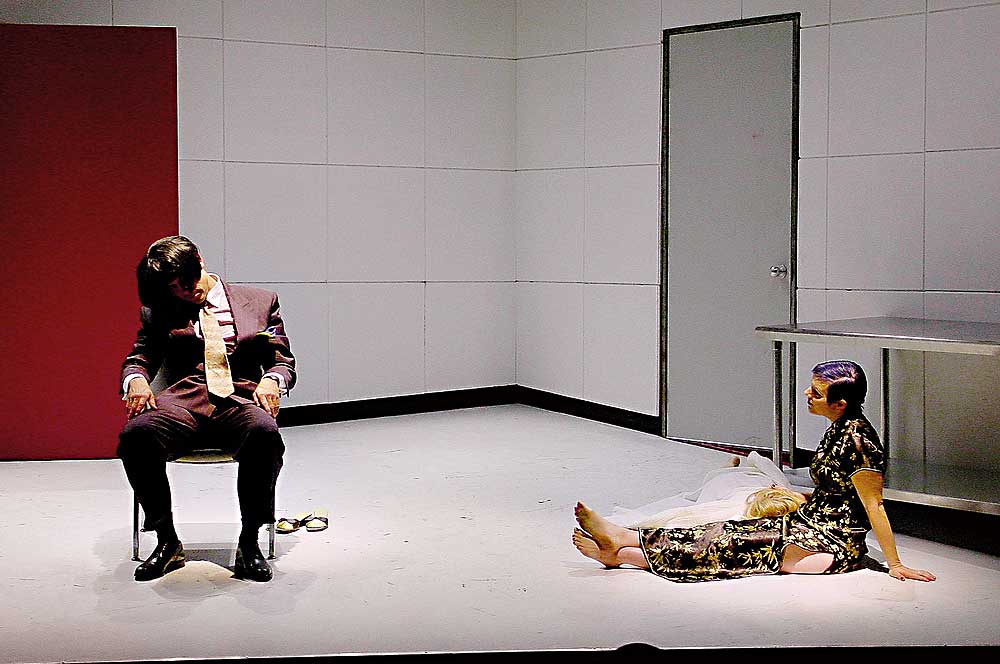It was probably only a matter of time before we Gen X-ers, who grew up as much with Star Wars and “Doctor Who” as with August Wilson and Tony Kushner, started to get our sci-fi chocolate in our theatrical peanut butter (to borrow a candy-selling slogan from our ’80s childhood). You can see the influence over the past few decades in plays and other live creations by artists as varied as Gordon Dahlquist, Qui Nguyen, Liz Duffy Adams, Jordan Harrison, Jeffrey Dorchen, César Alvarez, Paul Mullin, and Michael Golamco, among many others, as well as in the work of five playwrights who figure in a package of related stories in this issue: Mac Rogers, Madeleine George, Christina Anderson, Anne Washburn, and Jennifer Haley, the last in an in-depth profile by associate editor Diep Tran. Their work runs the gamut from out-and-out genre thrillers to multiverse what-if scenarios, from elevated magical realism to paranoid post-apocalyptica. And that’s just stateside—certainly Brits like Philip Ridley and Mark Ravenhill, not to mention elder masters like Caryl Churchill and Alan Ayckbourn, have been known to put science in their fiction (in a memorable coinage courtesy of playwright George from a roundtable discussion with Rogers and Anderson, moderated by Sam Thielman).
Of course, as often happens with this ancient live art, artists who discover something new are usually just uncovering something as old as the stage itself. Much as the art of theatrical projection can be traced back as far as the first use of light and shadow, and so-called “immersive” theatre to Dionysian revels, the craft of conjuring other worlds—whether on Prospero’s island or in a factory making artificial people, as in Karel Capek’s 1920 play Rossumovi Univerzální Roboti, to which we owe the word “robot”—is as old as masks and hemateons. Maybe older: The Greeks didn’t call their myths “science” fiction, of course. But how different from ancient myths are our own modern-day stories of monsters, mazes, and metamorphoses, really?
Some of today’s writers show a self-consciousness about their position as story makers that may be indeed be new—or at least, very much reflective of our post-everything age. Anne Washburn’s ambitious and troubling Mr. Burns, a post-electric play might be seen as a play about why we engage in the ritual of theatremaking, and about the quasi-religious comfort we seem to get from it, as much it is as a play about pop culture or environmental collapse (it is definitely those things, too). In a deeply reported feature in this issue, Sacramento correspondent Barry Wisdom followed Capital Stage’s recent staging of Washburn’s play from rehearsals to reviews, in a new expanded format we’re trying out with our longstanding, previously design-only Production Notebook column. Look for an exhaustive process piece each month detailing the journey of a different production—not excluding work of the designers, of course—in American Theatre. We hope you’ll agree that these nuts-and-bolts backstage stories have something rich and chewy to bring to the conversation about how and why theatre is made today.
Another regular American Theatre fixture is represented by this month’s playscript, Dry Land. Ruby Rae Spiegel’s intimate, wondrous, and unflinching new play traces the close but competitive friendship between two teenaged girls whose souls no less than their bodies are going through some wrenching, possibly irrevocable changes. Though there’s nothing virtual about the world Spiegel conjures, the clipped, biting language of her characters is certainly as coded as any made-up jargon, and the often vertiginous emotional landscape they surf with mostly faked bravado can feel as chilly and jagged as a moonscape. After all, from whichever end of the telescope writers look through—whether projecting from a great distance or zeroing in close—their sights are trained on the same familiarly odd, often alienated creatures who gather in the half-light and tell each other stories if for no other reason than to keep themselves warm, alert, and breathing.


